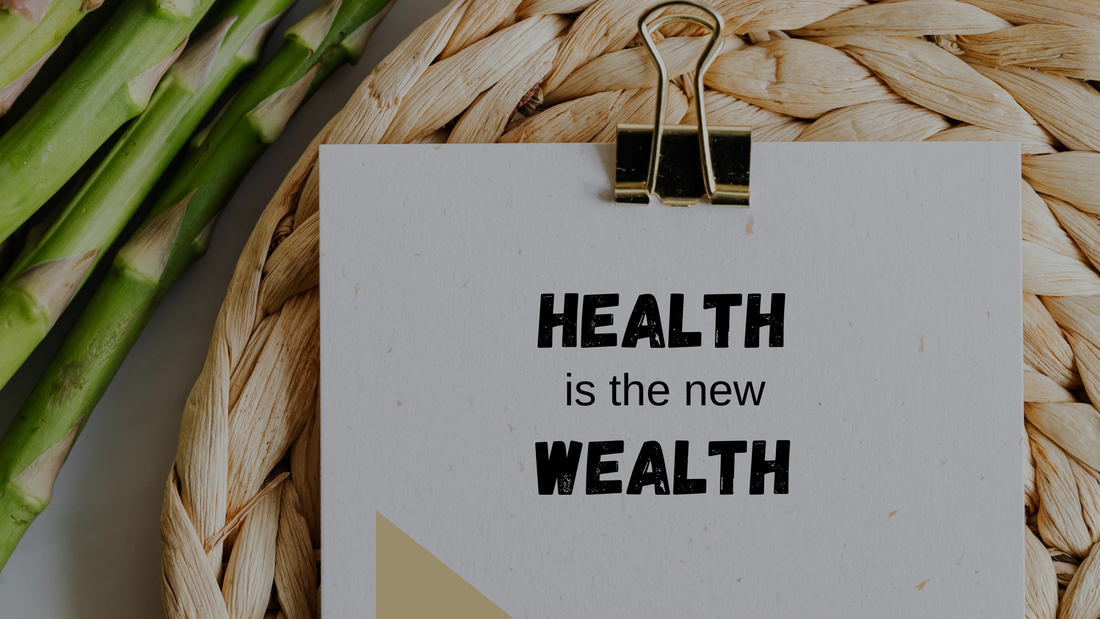As the Mediterranean season draws slowly to a close, many superyacht chefs are running on fumes, often neglecting their own well-being, while ensuring every guest's dietary needs are met. One key area that often suffers is gut health—a critical component of overall vitality that directly affects energy levels, mood, and even immunity.
I’m Sarah from Small Vegan Kitchen, and today we’re exploring a topic that might seem unconventional but is crucial for your well-being: Gut Health. Yes, we're diving into the details of digestion, including the often-overlooked subject of stool health or put more bluntly your poo.
The Hidden Impact of a Long Season on Gut Health
The demands of the season—long hours, irregular meals, and high stress—can wreak havoc on your digestive system. Poor gut health can manifest in various ways, from fatigue and brain fog to more severe digestive issues. But how do you know if your gut is crying out for help? The answer lies in a few key symptoms and, interestingly enough, in the state of your stools.

Identifying Poor Gut Health: Symptoms and Signs
Gut health issues can present themselves in several ways. Here are some common symptoms to watch out for:
- Bloating and Gas: A sign that your gut bacteria might be out of balance.
- Frequent Fatigue: A sluggish gut can make it harder for your body to absorb nutrients, leaving you feeling drained.
- Digestive Discomfort: Irregular bowel movements, cramps, and constipation can all signal that something isn’t right.
- Skin Issues: Conditions like acne, eczema, and rosacea are often linked to gut imbalances.
- Brain Fog: An unhealthy gut can affect your cognitive functions, making it hard to focus.
But there’s another, more direct way to assess your gut health—by taking a closer look at your stools.
Introducing the Bristol Stool Scale
The Bristol Stool Scale is a medical tool designed to classify the form of human stools into seven categories, ranging from Type 1 (hard lumps) to Type 7 (entirely liquid). It’s a surprisingly effective way to get a snapshot of your digestive health. By understanding where your stools fall on this scale, you can identify potential issues and take action to improve your gut health.
Here’s a quick breakdown of the Bristol Stool Scale:
- Type 1:Separate hard lumps, like nuts (difficult to pass)
- Type 2: Sausage-shaped but lumpy
- Type 3: Like a sausage but with cracks on the surface
- Type 4: Like a sausage or snake, smooth and soft (ideal)
- Type 5: Soft blobs with clear-cut edges (easy to pass)
- Type 6: Fluffy pieces with ragged edges, mushy
- Type 7: Watery, no solid pieces (entirely liquid)
Solutions for Each Bristol Scale Type
Now, let’s talk solutions. Here’s how you can move towards the ideal Type 4 stool:
- Type 1-2 (Hard Lumps, Difficult to Pass)
Solution: Increase your fibre intake with foods like oats, lentils, and leafy greens. Drink more water throughout the day to soften stools.
Tip: Try incorporating flaxseeds or chia seeds into your breakfast—they’re rich in fibre and can help ease constipation.
- Type 3-4 (Ideal Stools)
Solution: Maintain a balanced diet rich in whole foods, stay hydrated, and manage stress levels. Keep doing what you’re doing!
- Type 5-6 (Soft Blobs, Mushy)
Solution: You may need more fibre to add bulk to your stool. Opt for whole grains, root vegetables, and fermented foods like sauerkraut to support gut bacteria.
Tip: Consider reducing your intake of rich or greasy foods, which can contribute to looser stools.
- Type 7 (Entirely Liquid)
Solution: This could be a sign of inflammation or infection. Focus on soothing foods like bananas, rice, applesauce, and toast (BRAT diet) and consider consulting a healthcare professional if this persists.
Tip: Avoid caffeine, spicy foods, and alcohol, which can irritate your digestive tract further.
Now that you've identified the form of your stool using the Bristol Stool Scale, it's time to consider another important aspect: colour. Stool colour can be a valuable indicator of your digestive health and can provide insights into what's happening inside your body. While it’s normal for stool colour to vary slightly depending on what you eat, certain colours can signal potential issues that may require attention.
Here’s a breakdown of what different stool colours might mean:
- Brown (Normal)
What it Means: Brown is the ideal stool colour and indicates that your digestive system is functioning well. This colour is due to bile, a digestive fluid produced by the liver, which turns brown as it breaks down in the intestines.
Action Needed: None—this is a sign of a healthy digestive system.
- Green
What it Means: Green stool can occur when food moves through the intestines too quickly, not allowing enough time for bile to break down completely. It can also result from consuming large amounts of green leafy vegetables, green food colouring, or supplements like iron.
Action Needed: If it happens occasionally, it’s usually not a concern. Persistent green stools, however, could indicate an issue with digestion or absorption, so you might want to monitor your diet and consult a healthcare professional if it continues.
- Yellow
What it Means: Yellow, greasy, foul-smelling stools can be a sign of excess fat in the stool, which could indicate a malabsorption disorder like celiac disease. It might also occur if your pancreas isn’t producing enough enzymes to break down fat.
Action Needed: Persistent yellow stools should be evaluated by a healthcare professional to rule out conditions like celiac disease or issues with bile production.
- Black
What it Means: Black stools can result from taking iron supplements or certain medications, but it can also indicate bleeding in the upper gastrointestinal tract, such as from an ulcer. The blood turns black as it moves through the intestines.
Action Needed: If you haven’t consumed foods or medications that could cause black stools, seek medical attention immediately, as this could be a sign of a serious condition.
- Red
What it Means: Red stools can result from eating foods with red colouring, like beets, tomatoes, or red gelatine. However, it can also indicate bleeding in the lower gastrointestinal tract, such as from haemorrhoids, diverticulitis, or even colon cancer.
Action Needed: If you cannot attribute the red colour to food, see a healthcare professional to rule out any bleeding or other serious conditions.
- Pale, White, or Clay-Coloured
What it Means: Pale or clay-coloured stools can indicate a lack of bile, possibly due to a blockage in the bile ducts, liver disease, or issues with the pancreas. Medications like antacids can also cause pale stools.
Action Needed: This colour is not normal and should be evaluated by a healthcare provider to determine if there is an underlying issue with bile production or liver function.
- Blue or Purple
What it Means: Although rare, blue or purple stools can result from eating foods dyed with strong colouring agents, like certain candies or drinks.
Action Needed: If this colour appears without a clear dietary cause, consult a healthcare professional, though it’s typically not associated with any serious condition.
Just like the Bristol Stool Scale can help assess stool form, paying attention to stool colour is another important aspect of monitoring gut health. While occasional changes in colour are often harmless and related to diet, persistent or unexplained changes should not be ignored. By understanding what different stool colours can indicate, you can better assess your digestive health and seek timely intervention if necessary. This knowledge is particularly valuable for superyacht chefs who must maintain peak performance under intense conditions.
Regularly observing and being aware of changes in your stool can provide early warnings of potential health issues, making it an important part of a holistic approach to well-being.
From Poo to Performance: Real-Life Superyacht Experiences
When I worked with a high-performance racing superyacht crew, we took gut health seriously. The crew was predominantly on a plant-based diet while at work, and guess what? They noticed significant changes in their stools—moving closer to the ideal Type 4. We often talked about “the poo” in a light-hearted but meaningful way, as it was a direct indicator of how well their bodies were coping with the demands of their intense work.
Bringing Gut Health to the Table
Talking about poo doesn’t have to be awkward! Here are some ways to bring the conversation to your crew or kitchen team:
Make it Fun
Use humour to break the ice—perhaps create a ‘Bristol Scale Wall’ where team members can (anonymously) mark where they are on the scale.
Share Success Stories
Talk about how diet changes have positively impacted your gut health and invite others to share their experiences.
Keep it Educational
Emphasise that understanding gut health is about better performance and well-being, not just about food choices.
Gut health isn’t just about avoiding discomfort; it’s about optimising your body and mind to handle the rigours of your demanding job. By paying attention to the signals your body gives—whether through symptoms or stool consistency—you can take proactive steps to maintain your energy and performance levels. Let’s normalise talking about gut health and use it as a tool to finish the season on a high note, strong and resilient.
If you’re eager to delve deeper into gut health and discover how to enhance your crew’s well-being, Small Vegan Kitchen is here to guide you every step of the way. From practical tips for improving digestive health and engaging your crew in wellness practices to seamlessly integrating plant-based nutrition into your onboard offerings, we offer tailored support to meet your needs. Let us help you create a healthier, more vibrant crew and elevate your superyacht’s culinary experience. Reach out to Small Vegan Kitchen today to start transforming your onboard health and nutrition practices.




